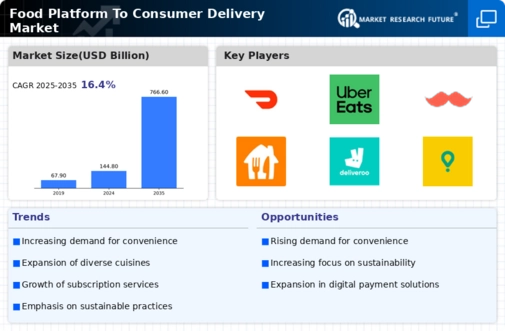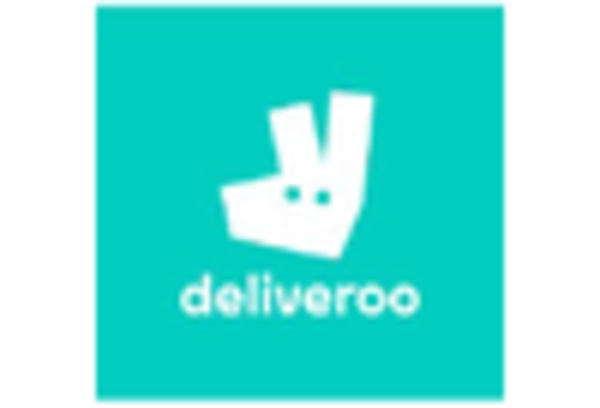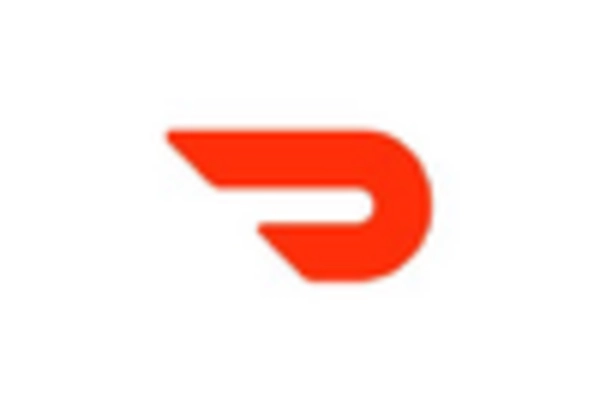Shift Towards Sustainable Practices
The Food Platform To Consumer Delivery Market is experiencing a shift towards sustainable practices, as consumers become more environmentally conscious. Many delivery platforms are now prioritizing eco-friendly packaging and sustainable sourcing of ingredients. This trend is supported by data indicating that a significant portion of consumers is willing to pay a premium for sustainable food options. As awareness of environmental issues continues to rise, the Food Platform To Consumer Delivery Market is likely to see an increase in demand for services that align with these values, potentially reshaping the competitive landscape.
Expansion of Restaurant Partnerships
The Food Platform To Consumer Delivery Market is witnessing an expansion of partnerships between delivery platforms and restaurants. This trend appears to be driven by the increasing recognition among restaurants of the potential revenue streams that delivery services can provide. In recent years, many restaurants have reported a significant increase in sales attributed to their presence on food delivery platforms. This collaboration not only enhances the visibility of restaurants but also allows them to reach a broader customer base. As more restaurants join these platforms, the Food Platform To Consumer Delivery Market is likely to experience accelerated growth, benefiting both delivery services and food establishments.
Increased Consumer Demand for Convenience
The Food Platform To Consumer Delivery Market is experiencing a notable surge in consumer demand for convenience. As lifestyles become increasingly hectic, consumers are seeking quick and easy meal solutions. This trend is reflected in the rising number of food delivery app downloads, which have reportedly increased by over 30% in the past year. The convenience factor is further amplified by the growing preference for online shopping, with many consumers opting to order food from the comfort of their homes. This shift in consumer behavior is likely to drive the growth of the Food Platform To Consumer Delivery Market, as businesses adapt to meet the evolving needs of their customers.
Growing Interest in Diverse Cuisine Options
The Food Platform To Consumer Delivery Market is benefiting from a growing interest in diverse cuisine options among consumers. As globalization continues to influence food preferences, consumers are increasingly seeking authentic and varied culinary experiences. This trend is evident in the rising popularity of international cuisines on food delivery platforms, with many consumers willing to explore new flavors and dishes. Consequently, delivery services that offer a wide range of cuisine options are likely to attract a larger customer base, thereby driving growth in the Food Platform To Consumer Delivery Market.
Technological Advancements in Delivery Logistics
Technological advancements are playing a crucial role in shaping the Food Platform To Consumer Delivery Market. Innovations such as real-time tracking, automated delivery systems, and artificial intelligence are enhancing the efficiency of food delivery services. For instance, the implementation of AI algorithms for route optimization has been shown to reduce delivery times significantly. As technology continues to evolve, it is expected that the Food Platform To Consumer Delivery Market will become more streamlined, leading to improved customer satisfaction and increased operational efficiency for delivery platforms.


















Leave a Comment